You can listen to Hoosier History Live! live on the air each Saturday, or listen online at the WICR website during the broadcast on any computer with speakers, anywhere, or on a smartphone. We invite you to visit our website!
June 9 show
Very first Hoosiers: ancient people here
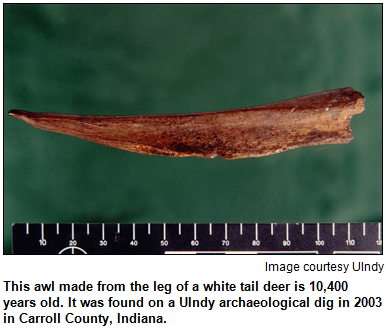 Nearly 11,000 years ago, people lived in the dense, mature forests that centuries later became the site of the Hoosier state. Our studio guest is an expert on these ancient human beings, what they ate, how they lived, and the animals (some long gone from Indiana; others similar to, but different in size and shape from critters found here today) with whom the people shared the wilderness.
Nearly 11,000 years ago, people lived in the dense, mature forests that centuries later became the site of the Hoosier state. Our studio guest is an expert on these ancient human beings, what they ate, how they lived, and the animals (some long gone from Indiana; others similar to, but different in size and shape from critters found here today) with whom the people shared the wilderness.
Dr. Christopher Schmidt, a biological anthropologist and archaeologist who is one of the most popular faculty members at the University of Indianapolis, will join Nelson in studio to share insights about the people who merit being called "the very first Hoosiers."
Chris, a lifelong Hoosier who is director of the Indiana Prehistory Laboratory at UIndy, has led excavations across the state and is credited with being a crucial part of the team that discovered the oldest known man-made tool (that can be accurately dated) in Indiana.
"These were not slow-witted cave people or aimless wanderers," Chris emphasizes. "They were hunter-gatherers who lived in groups of about 20 or 50 people. When they ventured out into foraging groups, they would often stay under natural, overhanging rock shelters. For a more extended basis, they lived in dwellings they built that were comparable to what we know as wigwams."
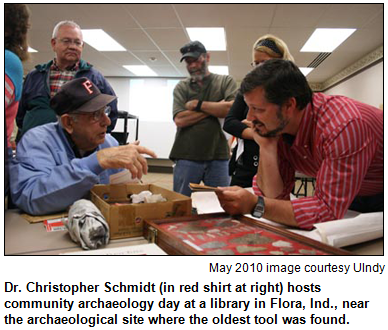 According to Chris, these first Hoosiers shared the dense forest with mastodons, giant beavers, musk ox (which have long been gone from Indiana, but can be found in Alaska today) and the peccary, a pig-like creature that was becoming extinct in the Midwest.
According to Chris, these first Hoosiers shared the dense forest with mastodons, giant beavers, musk ox (which have long been gone from Indiana, but can be found in Alaska today) and the peccary, a pig-like creature that was becoming extinct in the Midwest.
"Other animals here then would be recognizable today - white-tailed deer, bobcats, snakes, lizards and black bears," Chris says. By studying the teeth of ancient humans, Chris gains insights about their diet and the diseases they endured.
So how did these ancient people get to the future site of Indiana?
"Our best information indicates they came from the Bering Straits, then over a period of centuries, spread out," Chris says. "First, they traveled south to what became California, then some of the ancient people moved into the Midwest."
The oldest tool that's been discovered in Indiana is a prehistoric bone artifact. Determined to be about 10,400 years old, the tool was found near the town of Flora in Carroll County during an excavation by Chris and others on a UIndy archaeology team. The tool, an awl carved from the bone of a white tail deer, is stored in the Indiana Prehistory Lab in the basement of Good Hall.
 According to Chris, the first Hoosiers had a varied diet.
According to Chris, the first Hoosiers had a varied diet.
"They ate both meat and plants, including nuts, seeds and small animals," he said. "They liked to live along waterways, so there were clusters of ancient people along the Ohio River, from sites near what became Madison over to Evansville. They were not warring groups."
Fascinated by archaeology and paleontology since boyhood, Chris grew up in Indianapolis and Carmel. He was a running back on Carmel High School's varsity football team in 1986.
"My goal from the beginning has been to emphasize Indiana and its important role in what anthropologists call pre-history," he said. "Dozens of books and articles were being published about ancient people, but the area that became Indiana was being completely overlooked. In a very practical way, I've been trying to call attention to what was here."
In addition to overseeing digs in Carroll County, Chris has led excavations in Monroe, Jackson, Johnson and Dearborn counties.
History Mystery
One of the greatest leaders in Native American history was born in 1751 not far from the eventual site of Fort Wayne. He grew up in a Miami village said to be, in several ways, similar to European villages of the era.
Often described as calm and even-tempered, the Miami leader was respected both in peace and in war. His Miami warriors eventually were overwhelmed by the forces of a former Revolutionary War hero in the Battle of the Fallen Timbers in 1794. Although the Miami leader was defeated, he continued to be so respected that he lived in a lodge in northeastern Indiana until his death in 1812.
Question: Name the Native American leader.
To win the prize, you must call in with the correct answer during the live show and be willing to be placed on the air. Please do not call if you have won a prize from any WICR show during the last two months. The call-in number is (317) 788-3314, and please do not call until you hear Nelson pose the question on the air.
This week's prize is an overnight stay at the Crowne Plaza Indianapolis Airport and a pair of tickets to the NCAA Hall of Champions in White River State Park. These prizes are courtesy of the ICVA.
Roadtripper: Wine Down on the Farm at Huddleston Farmhouse
Guest Roadtripper this week is Joe Frost with the Eastern Regional Office of Indiana Landmarks in Cambridge City, Ind. He'll tell us about new opportunities at Indiana Landmarks' 1841 Huddleston Farmhouse, which is located on U.S. 40, the Old National Road, about 20 miles west of Richmond and 60 miles east of Indianapolis.
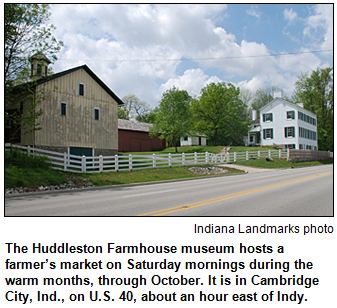 Weary travelers making the difficult trek westward on the National Road in the early 1800s stopped at the Huddleston family's farm in Cambridge City for meals, provisions, shelter and to feed and rest their horses.
Weary travelers making the difficult trek westward on the National Road in the early 1800s stopped at the Huddleston family's farm in Cambridge City for meals, provisions, shelter and to feed and rest their horses.
The Huddleston Farmhouse Museum offers visitors a glimpse of the daily lives of John and Susannah Huddleston and their 11 children, as well as the travelers who crowded the porches and yard and rented the farmhouse's two "travelers' kitchens" for cooking and sleeping.
The museum also operates as the National Road Heritage Site, where exhibits offer modern-day travelers a vivid picture of cross-country travel on the Historic National Road from Cumberland, Md., to Vandalia, Ill., from the pioneer era to the present.
New this year at the Huddleston Farmhouse is a weekly Farmers Market on Saturdays from 8 a.m. to noon from now through October. It's an opportunity to find fresh local produce, herbs, plants, flowers, arts, crafts and more.
And Joe, who also is executive director of the Indiana National Road Association, will also invite us to Wine Down on the Farm at Huddleston Farmhouse on June 28 from 5:30 to 7:30 p.m. That evening, plan to enjoy hors d'oeuvres and wine while viewing a show of paintings by Fort Wayne artist Gwen Gutwein.
And Roadtripper Chris Gahl of the ICVA will be back with us live next Saturday!
Your Hoosier History Live! team,
Nelson Price, host and creative director
Molly Head, producer, (317) 927-9101
Chris Gahl, Roadtripper
Richard Sullivan, webmaster and tech director
Pam Fraizer, graphic designer
Garry Chilluffo, creative consultant
Michele Goodrich, Jed Duvall, grant consultants
Joan Hostetler, photo historian
Dana Waddell, volunteer-at-large
www.hoosierhistorylive.org
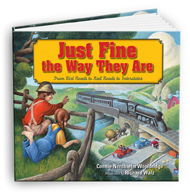



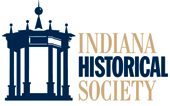
Please tell our sponsors that you appreciate their support: Aesop's Tables | Just Fine the Way They Are, a children’s book about the National Road | Indiana Historical Society | Lucas Oil | Story Inn.
 Acknowledgments to Print Resources, Indianapolis Public Library, Monomedia, Indiana Humanities, Indianapolis Convention & Visitors Association, WICR-FM, Fraizer Designs, Heritage Photo and Research Services, Derrick Lowhorn and many other individuals and organizations. We are an independently produced program and are self-supporting through organizational sponsorships, grants and through individual tax-deductible contributions through Indiana Humanities. Visit our website to learn how you can support us financially.
Acknowledgments to Print Resources, Indianapolis Public Library, Monomedia, Indiana Humanities, Indianapolis Convention & Visitors Association, WICR-FM, Fraizer Designs, Heritage Photo and Research Services, Derrick Lowhorn and many other individuals and organizations. We are an independently produced program and are self-supporting through organizational sponsorships, grants and through individual tax-deductible contributions through Indiana Humanities. Visit our website to learn how you can support us financially.
June 16 show
Polio epidemic during the 1940s and '50s
With its devastating impact and its tendency to strike children, teenagers and young adults, polio created widespread panic during the 1940s and '50s. Epidemics of the often-fatal disease occurred in earlier decades as well, but Hoosier History Live! will focus on the 1940s and '50s because of some significant aspects that unfolded in Indiana then.
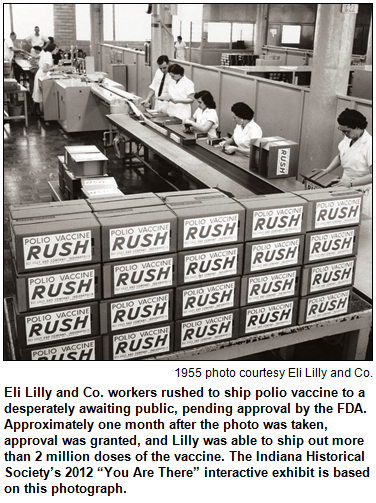 "It was so frightening because, even though we knew polio was caused by a virus, we didn't know how it was being transmitted," recalls Wanda Fortune, an Indianapolis civic leader who will be one of Nelson's guests.
"It was so frightening because, even though we knew polio was caused by a virus, we didn't know how it was being transmitted," recalls Wanda Fortune, an Indianapolis civic leader who will be one of Nelson's guests.
She has been widowed twice. Both of Wanda's husbands were involved with the "polio story" as it unfolded in the Hoosier capital. Her first husband, a surgeon who was treating child patients with polio in 1945, contracted the disease himself and spent a week in an iron lung. Her second husband was a top analytical chemist at Eli Lilly and Co. in the 1950s.
That's the era depicted by the Indiana Historical Society in a new "You Are There" multimedia exhibit that is set on the Lilly campus, where employees rushed to pack vials of the new vaccine discovered by Dr. Jonas Salk.
The historical society's director of exhibitions research, Eloise Batic, will join Nelson and Wanda on our show to share insights about the era and the Hoosier aspects.
More than 20,000 cases of polio were reported every year across the country during the early 1950s. According to the historical society, about 75 percent of the cases in 1954 - the year before Salk developed his vaccine - occurred in people under age 20.
Wanda's first husband, Dr. K. Randolph Manning, was in his residency as a young orthopedic surgeon. He was treating child patients at Indianapolis hospitals when he was afflicted with polio; Wanda had been married to him for just three months.
"Randy was very fortunate because he recovered and was able to resume a full life, including his medical practice," she says.
Her second husband, Dr. Brooks Fortune, helped oversee research and development (as well as quality control) at Lilly. Wanda married him long after 1955. That's when employees - including women assembly workers at Lilly depicted in a photo that has inspired the new Indiana Experience at the Eugene and Marilyn Glick Indiana History Center - hurried to pack and send the vaccine around the world. Salk's discovery of the polio vaccine is considered one of the greatest medical breakthroughs in history.
© 2012 Hoosier History Live! All rights reserved.